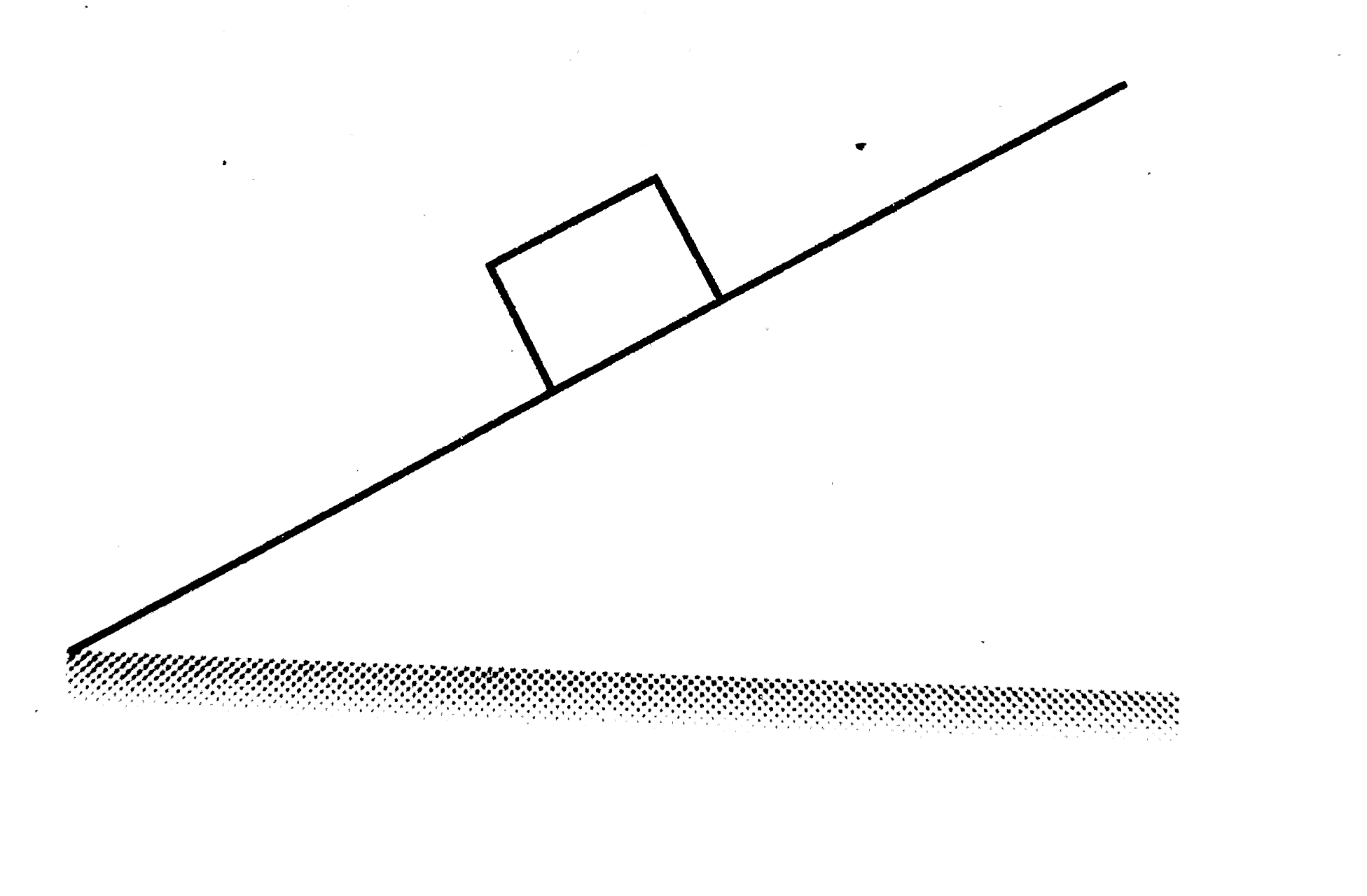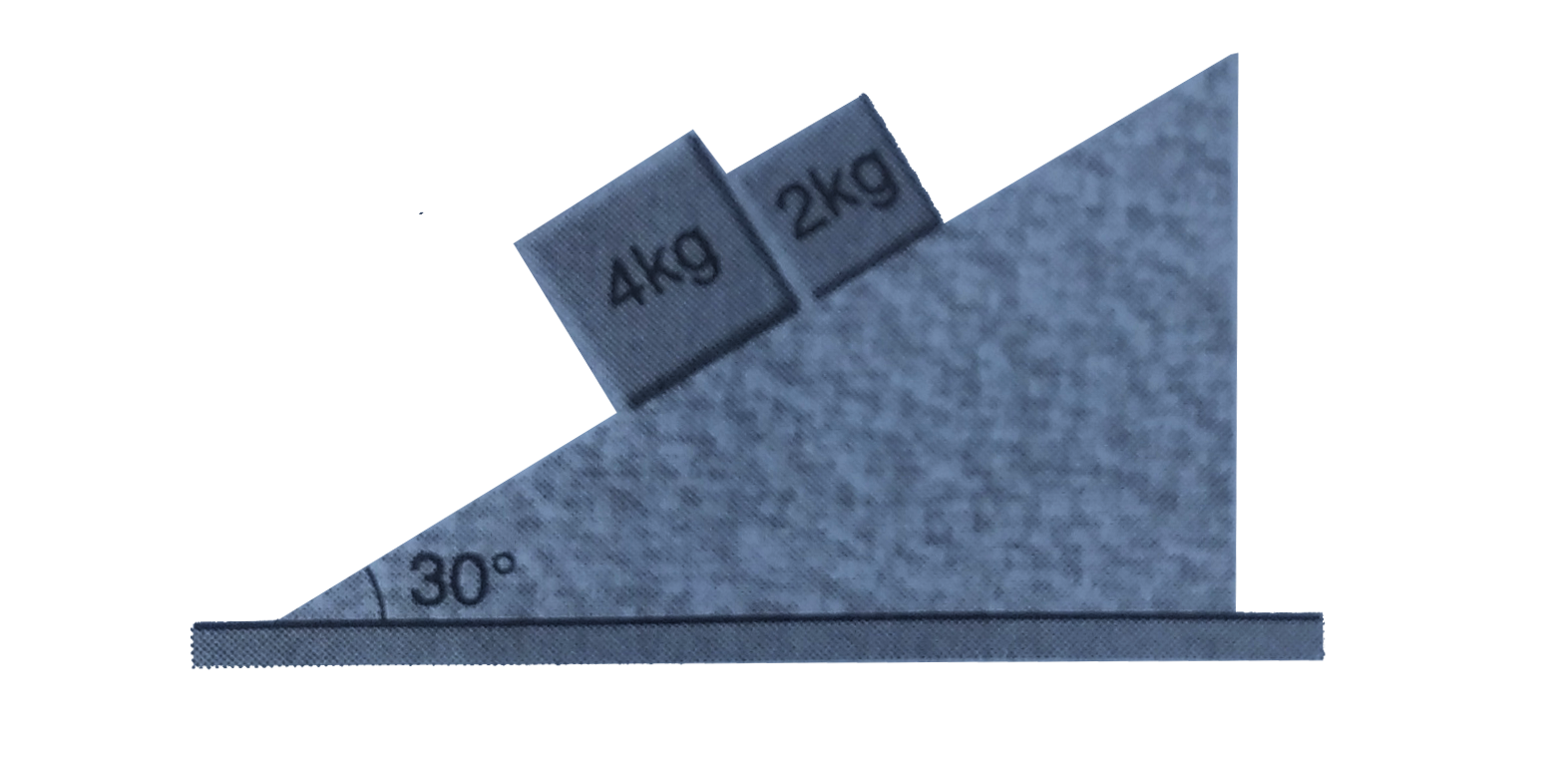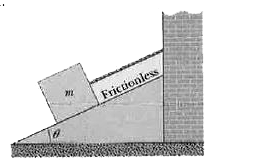Consider two identical blocks one resting on a flat surface and the other resting on an incline. In which case is the normal force greater?Both are sameN=mgBoth are sameN=0Case ACase B
Answer : Case AIn case A we know that N = WIn case B N < W.In fact we can see that N=Wcosθ
Related Solutions
A block of mass 5 kg is at rest on a rough inclined surface. If angle of inclination of plane is , then force applied by it on block is
View SolutionA block of mass 5 kg is at rest on a rough inclined surface. If angle of inclination of plane is 60^(@) , then force applied by it on block is
View SolutionTwo blocks A and B of same masses are resting in equilibrium on an inclined plane having inclination with horizontal =alpha(gt0) . The blocks are touching and exerting no zero normal force on each other with block B higher than A . Coeffcient of static friction of A with incline =1.2 adn of B=0.8 . If motons not imminent
View SolutionTwo blocks A and B of same masses are resting in equilibrium on an inclined plane having inclination with horizontal =alpha(gt0) . The blocks are touching and exerting no zero normal force on each other with block B higher than A . Coeffcient of static friction of A with incline =1.2 and of B=0.8 . If motion is not imminent
View SolutionA block of mass 3kg is at rest on a rough inclined plan as shown in the Figure. The magnitude of net force exerted by the surface on the block will be

View SolutionA block of mass 3kg is at rest on a rough inclined plan as shown in the Figure. The magnitude of net force exerted by the surface on the block will be
View SolutionA block of mass 3kg is at rest on a rough inclined plan as shown in the Figure. The magnitude of net force exerted by the surface on the block will be
View SolutionA block of mass m is at rest on a rough inclined plane, whose friction coefficient is Net force exerted by surface on block is :-
View SolutionAnswer in one word. In which case is the friction force higher between the two sloping surfaces and the two flat surfaces?
View SolutionTwo identical 5 kg blocks are moving with same speed of 2ms^(-1) towards each other along a frictionless horizontal surface. The two blocks collide, stick together and come to rest. Consider the two blocks as a system. Calculate work done by (i) external forces and (i) Internal forces.
View SolutionTwo blocks of masses and in contact with each other on frictionless, horizontal surface. If a horizontal force F is given on set into motion with acceleration a, then reaction force on mass by is
View SolutionTwo block of masses and are released from rest over a smooth inclined place of inclination as shown in figure what is the normal force between the two blocks?

View SolutionTwo block of masses 2kg and 4kg are released from rest over a smooth inclined place of inclination 30^(@) as shown in figure what is the normal force between the two blocks?
View SolutionTwo solid blocks of identical size are submerged in water. One block is iron and the other is aluminium. Upon which is the buoyant force greater?
View SolutionTwo solid blocks of identical size are submerged in water. One block is iron and the other is aluminium. Upon which is the buoyant force greater?
View SolutionTwo solid blocks of identical size are submerged in water. One block is iron and theb other is aluminium. Upon which is the buoyant force greater ?
View SolutionIn Fig. 5-27, a block attached to a chord is resting on an inclined plane. Let the mass of the block be 8.5 kg and the angle be .
(a) Find the tension in the cord and normal force acting on the block.
(b) If the cord is cut, find the magnitude of the resulting acceleration of the block.
Figure 5-27 A block attached to a chord resting on an incline.
View SolutionConsider a system of two identical particles. One is at rest and the other has an acceleration . The centre of mass has an acceleration
View SolutionLet us consider the structure of two identical particles. One is at rest and the other overset rarr a Works with acceleration. Acceleration of integrity.
View SolutionConsider a system of two identical particles. One of the particles is at rest and the other has an acceleration. The centre of mass has an acceleration.
View Solution